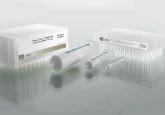Metabolomics: a clinical perspective

 In 1997, Bertrand Rochat obtained his PhD in Science at the University of Lausanne, continuing his academic career with various post-doc periods in France, the USA and Scotland. Bertrand has published original articles in analytical chemistry, MS, drug delivery and drug and peptide metabolism. From 2001–2003, he worked as lab head in the department of Pre-Clinical Safety at Novartis Pharma in Switzerland. Since 2003, Bertrand Rochat has been in charge of the MS Facility at the University Hospital of Lausanne (Switzerland). He assists medical doctors and biologists in their research and, in parallel, conducts his own research. Currently the focuses of his work are 1) the implementation of a routine metabotyping analysis (targeted metabolomics) for clinical research purposes, 2) the quantitative determination of native peptides by LC-MS in biological matrices and 3) hepatic or intratumoral drug metabolism of anticancer agents such as protein kinase inhibitors. Bertrand is currently a member of the Scientific Committee of the MSACLEU (https://www.msacl.org/).
In 1997, Bertrand Rochat obtained his PhD in Science at the University of Lausanne, continuing his academic career with various post-doc periods in France, the USA and Scotland. Bertrand has published original articles in analytical chemistry, MS, drug delivery and drug and peptide metabolism. From 2001–2003, he worked as lab head in the department of Pre-Clinical Safety at Novartis Pharma in Switzerland. Since 2003, Bertrand Rochat has been in charge of the MS Facility at the University Hospital of Lausanne (Switzerland). He assists medical doctors and biologists in their research and, in parallel, conducts his own research. Currently the focuses of his work are 1) the implementation of a routine metabotyping analysis (targeted metabolomics) for clinical research purposes, 2) the quantitative determination of native peptides by LC-MS in biological matrices and 3) hepatic or intratumoral drug metabolism of anticancer agents such as protein kinase inhibitors. Bertrand is currently a member of the Scientific Committee of the MSACLEU (https://www.msacl.org/).
The metabolomics survey by Bioanalysis Zone reveals three main ‘concerns’ to me:
First of all, plasma, serum and urine are the principal matrices of interest for the respondents (73%, 49% and 53%, respectively). This shows that the biomatrices classically used in basic research (e.g. tissues/organs and cell cultures) are less predominant. Even if plasma/serum or urine can also be used for basic research, these results show that respondents logically considered that metabolomics records global and pertinent individual pictures of metabolites, defined as metabotypes (metabolite phenotypes), resulting from genome-environment relationships. Therefore, we can foresee the following steps: diagnostics, biological passports and personalized medicine. Even if, today, metabotypes are determined by research rather than routine analyses, we can expect that metabotyping will soon become a routine option in clinical laboratories (<5 years). This determination could be done on a small percentage of samples when the need for a more global and ‘unbiased’ patient evaluation will be requested, rather than the targeted determinations of a few metabolites as is performed today.
Secondly, this survey reveals that there is a need for harmonization (>70% of respondents answered that it would help significantly or a little). This means that we should pull the same rope and combine our forces! For instance, small metabolomics laboratories (2–4 people) with tight running budgets, as we can/will find in most hospitals, can still perform these analyses. But there are a few bottlenecks that inhibit metabolomics growth and limit metabolomics development. These bottlenecks are revealed by the survey: Which sample preparation to select (from numerous articles) and how to identify metabolites rapidly? These bottlenecks could mainly be removed if a few generic, validated, well characterized and widely accepted metabolomics methods were ready to be implemented. Generic methods would help in the choice of sample preparation (one main concern raised by this survey), LC conditions (stationary, mobile phases and gradient) and metabolite identification (e.g. retention times of 100’s pure standard metabolites). Metabolomics national societies or the Metabolomics Society could help in this matter. More generally, such initiative would help to spread efficient metabolomics methods and to advocate metabolome determination resulting in better financial support, which is still very low (<10% and <20%, in comparison to funding for genomics and proteomics, respectively).
Thirdly, this survey points out an apparent contradiction. Indeed, whereas the main analytical tool employed for metabolomics is triple-quadrupole (TQ)-MS (60% of respondents use TQ-MS), there is just 23% of the analyses that are performed as targeted studies only. Taking into account that TQ-MS is a poor technology for untargeted analysis, it reveals that most analyses (77%) that are untargeted or both targeted and untargeted, are performed by other analytical platforms than TQ-MS (e.g. HRMS, GC-MS, NMR). Thus, today, bioanalysts do not choose between targeted and untargeted analysis: they do both simultaneously, probably by high-resolution full scan or data independent acquisitions.
In conclusion, the survey reveals what we can anticipate for the coming years. A few well characterized metabolomics methods for the determination of polar, medium polar and lipid metabolites in plasma, among other matrices, should emerge. In addition, with today’s affordable HRMS instruments, LC-HRMS analyses, recording untargeted and targeted data simultaneously, should be reinforced.
Click here to view our ‘Spotlight on metabolomics’ panel discussion, which Rochat took part in.





